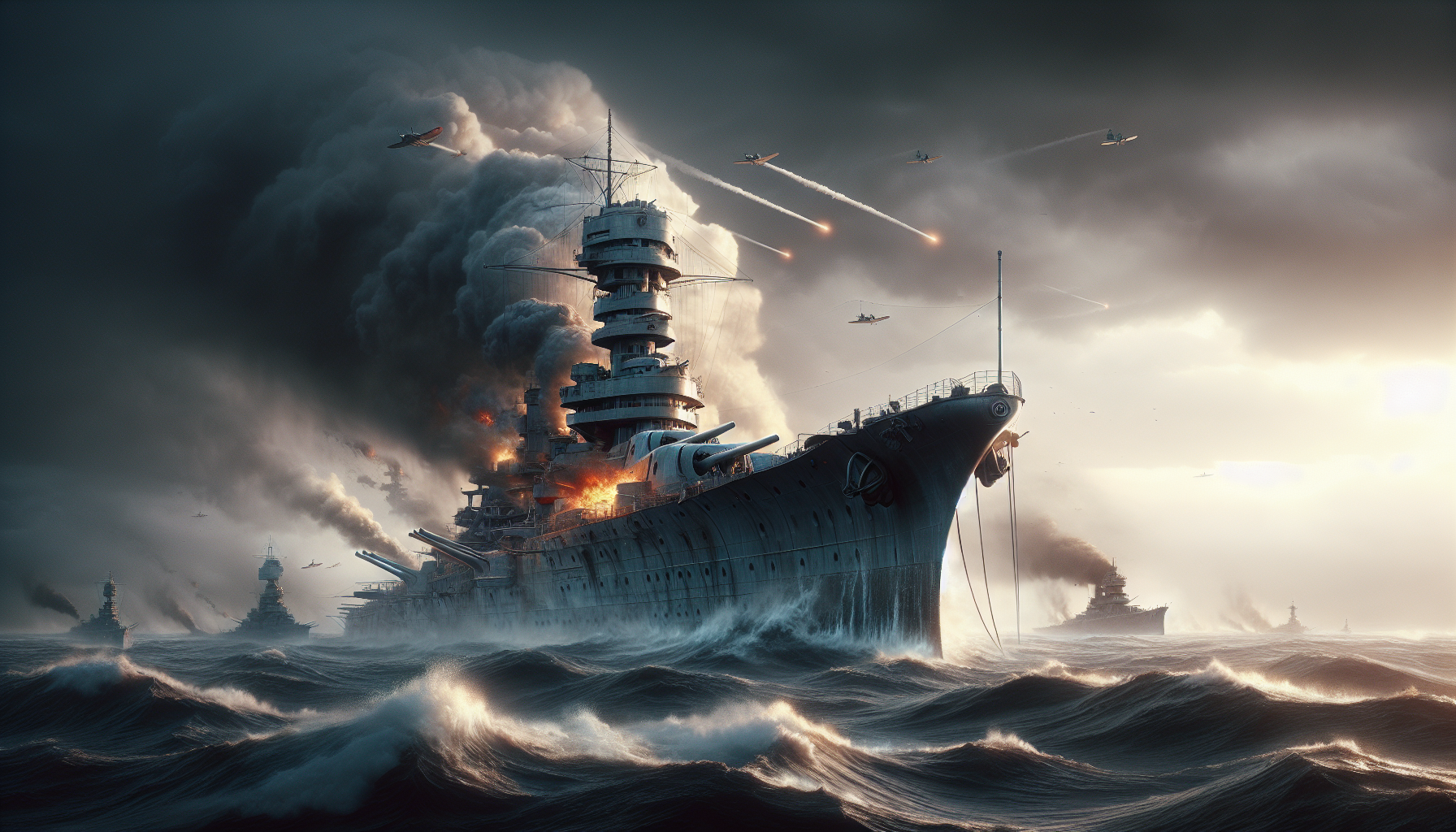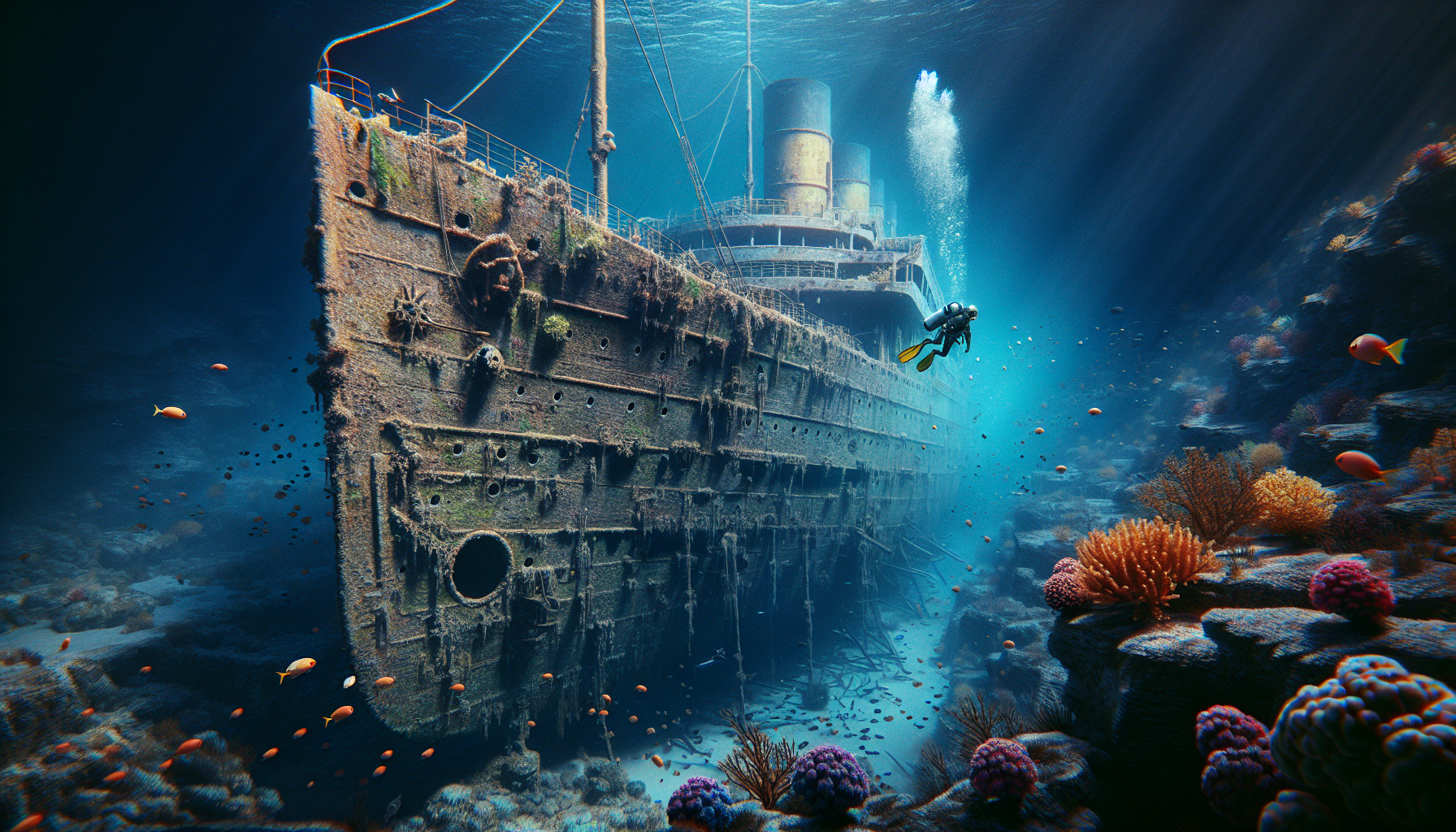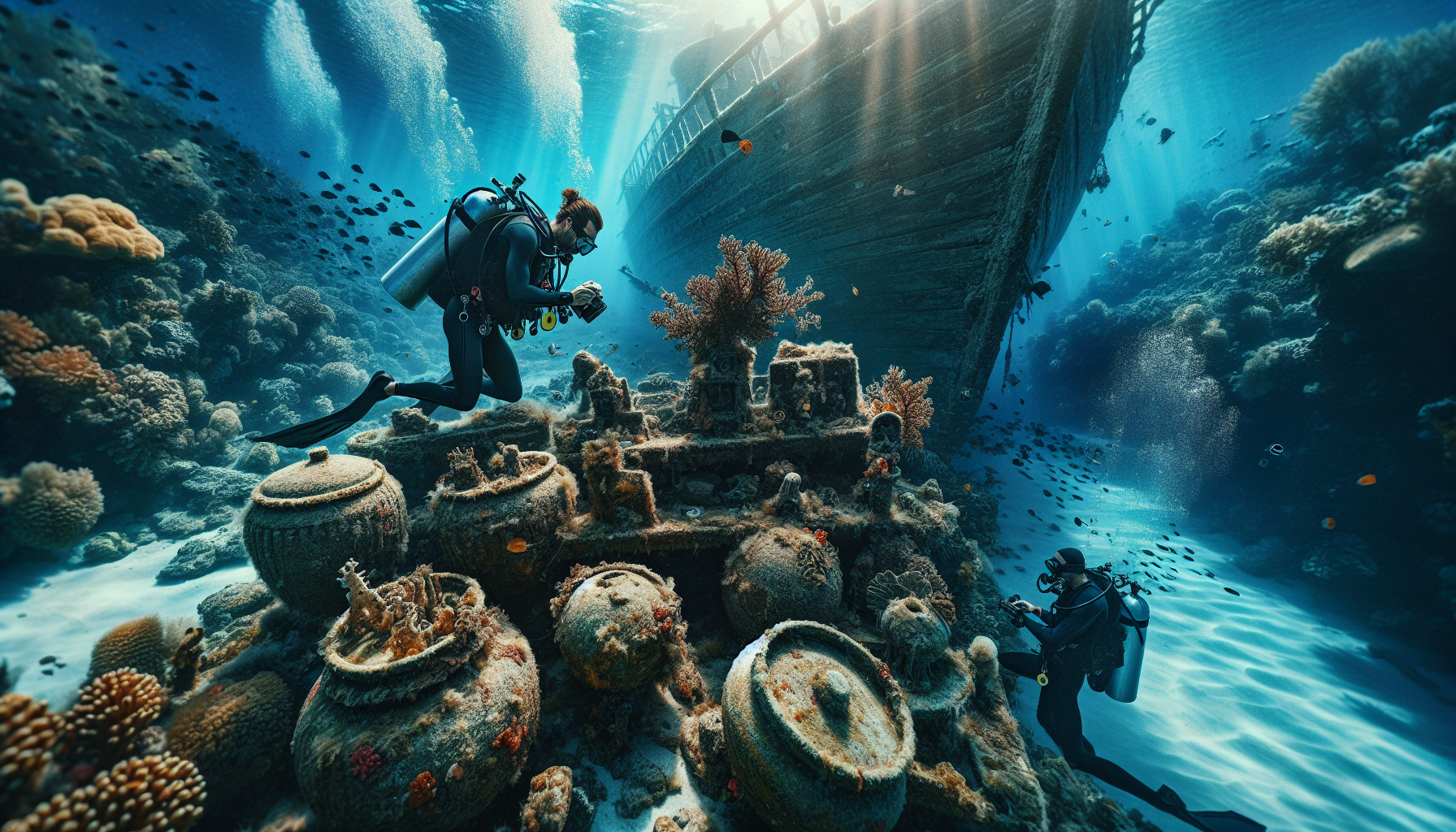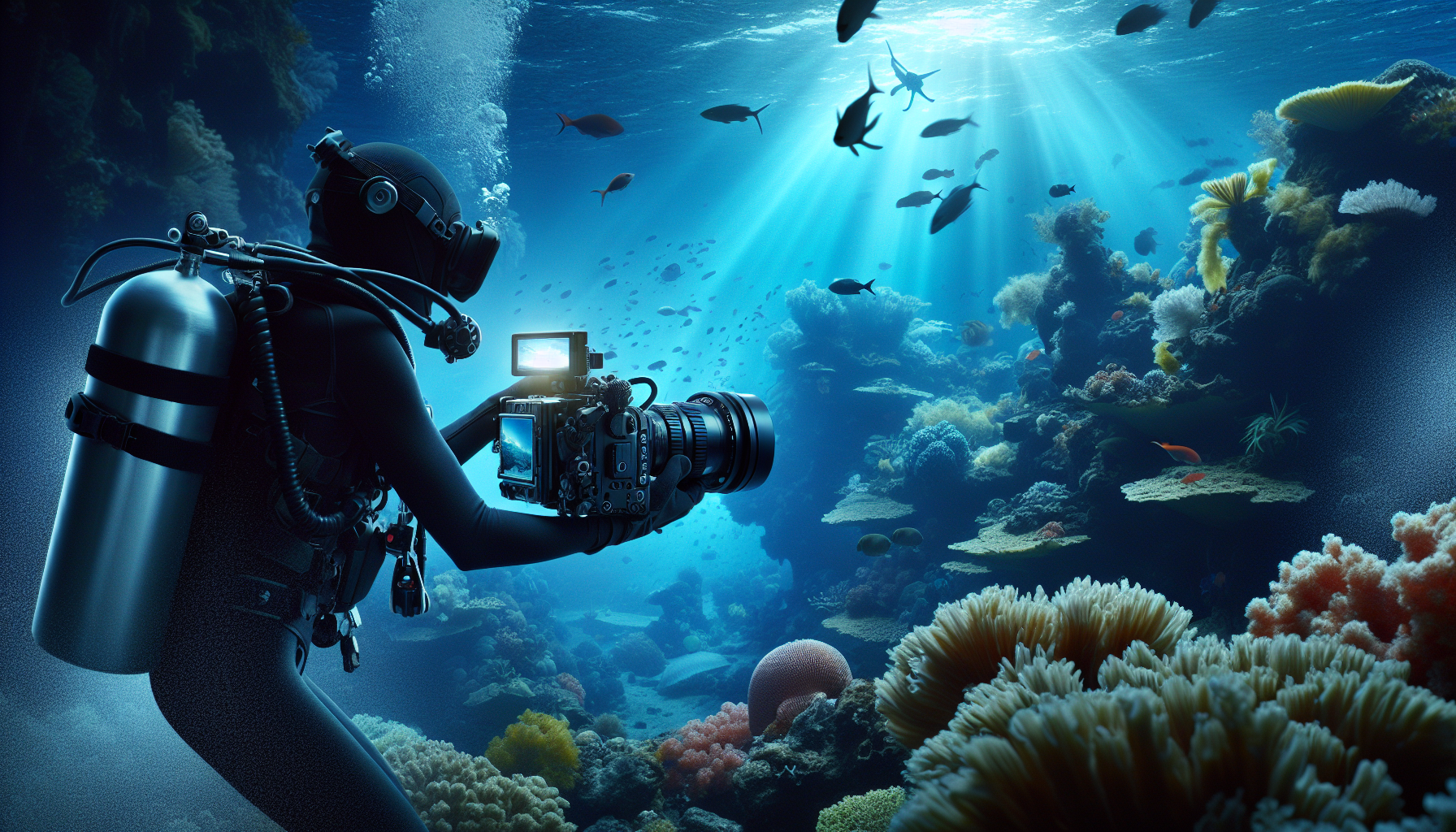In the grand tapestry of naval history, few vessels have captured the imagination and reverence of both enthusiasts and historians quite like the mighty warship Yamato. Constructed in the throes of World War II, the Yamato was not merely a testament to Japanese naval engineering prowess, but a colossal symbol of imperial ambition and maritime dominance. Towering above the waves with her formidable size and firepower, she was the pride of the Imperial Japanese Navy, representing a beacon of hope and power amidst the chaos of war. Yet, beneath the glory and grandeur of her conception, lies an untold tragedy—a story of ambition, sacrifice, and a devastating end that befell this legendary vessel. 🌊
The Yamato’s journey began in an era when the world was embroiled in a conflict that would reshape the very contours of global power. Her construction was shrouded in secrecy, a clandestine effort by Japan to assert its naval supremacy. The ship was a marvel of engineering, boasting the largest naval guns ever mounted on a warship and armor that seemed impenetrable. The magnitude of her design was matched only by the ambition of those who built her, envisioning the Yamato as an indomitable force against the Allies. However, as history would reveal, even the mightiest constructs are vulnerable to the relentless tides of change and adversity.
The narrative of the Yamato is not merely about the ship itself, but also about the broader strategic missteps and the shifting dynamics of warfare that sealed her fate. As the war progressed, the paradigm of naval battles evolved, with air superiority and aircraft carriers emerging as decisive factors in determining naval outcomes. The Yamato, with her colossal guns and heavy armor, became a relic of an era that was swiftly fading. This article delves into the tactical decisions, the strategic oversights, and the human stories that intertwined to lead the Yamato to her final, fateful mission—Operation Ten-Go. It was a mission that would see her transformed from a symbol of power to a poignant reminder of the futility of war.
In exploring the untold tragedy of the Yamato, we will journey through her conception and construction, examining the geopolitical aspirations that fueled her creation. We will analyze the pivotal battles that defined her operational history, shedding light on the changing face of naval warfare during World War II. Finally, we will recount the harrowing events of her last voyage, unraveling the human element behind this legendary legacy. Through survivor accounts, strategic analyses, and historical context, this article seeks to illuminate the lessons learned from the Yamato’s demise and the enduring impact of her story on naval history. Anchored in both triumph and tragedy, the saga of the Yamato is a powerful testament to the complexities of war and the indomitable spirit of those who sailed upon her. 🚢
The Genesis of Yamato: Engineering Marvel of the Imperial Japanese Navy
The story of the Yamato, one of the most formidable warships ever constructed, begins in the midst of escalating global tensions in the 1930s. The Imperial Japanese Navy was determined to create a battleship that could surpass anything in the Allied fleets. The result was the Yamato, an engineering marvel that symbolized Japan’s naval ambition and technological prowess. Her construction began in 1937 at the Kure Naval Arsenal, shrouded in secrecy to prevent espionage.
The Yamato was not just a ship; it was a floating fortress. At over 263 meters long and weighing nearly 72,000 tons at full load, she was the largest battleship ever built. Her main battery consisted of nine 46 cm (18.1 inch) Type 94 naval guns, the largest ever fitted to a warship. These guns could fire shells weighing as much as 1,460 kg over a distance of 42 km. The ship’s armor was equally impressive, with a belt thickness of up to 410 mm, designed to withstand the heaviest of enemy gunfire. This unprecedented combination of firepower and protection embodied the peak of naval architecture of its time.
The Operational History: Yamato’s Role in the Pacific Theater
The Yamato and her sister ship, the Musashi, were central to Japan’s naval strategy during World War II. However, their operational history was marked by cautious deployment, largely due to the fear of losing such valuable assets. Initially, the Yamato served as the flagship of Admiral Isoroku Yamamoto, commander-in-chief of the Combined Fleet. Her first major engagement came during the Battle of Midway in 1942, although she played a limited role in the conflict.
Despite her formidable presence, the Yamato was constrained by strategic and logistical challenges. Her massive size and fuel consumption limited her range and necessitated a significant support fleet. Furthermore, the evolving nature of naval warfare, which increasingly favored air power over battleship confrontations, rendered her less effective in battle. The sinking of the Musashi in 1944 by American aircraft highlighted the vulnerability of even the most heavily armored battleships to aerial attack.
Yamato’s final mission, Operation Ten-Go, was a desperate attempt by the Japanese Navy to delay the American invasion of Okinawa in 1945. The operation was essentially a one-way trip, as there was not enough fuel for the return journey. On April 7, 1945, Yamato set sail with nine escorts, including the cruiser Yahagi and eight destroyers. The Japanese fleet was intercepted by U.S. carrier aircraft, which launched a relentless assault on the battleship.
The Final Voyage: A Tragic End to a Legendary Warship
Operation Ten-Go was the Yamato’s last stand. Despite her formidable defenses, the battleship was overwhelmed by waves of American aircraft. Over 300 planes from Task Force 58 participated in the attack, launching bombs and torpedoes that crippled the Yamato. Her anti-aircraft guns, although numerous, were unable to repel the overwhelming assault. In less than two hours, the Yamato was struck by at least 11 torpedoes and 6 bombs. A massive explosion ripped through the ship, sealing her fate as she capsized and sank, taking over 3,000 of her crew with her.
The sinking of the Yamato marked a significant moment in naval history, symbolizing the end of the era of the battleship. Her destruction underscored the dominance of air power in modern naval warfare. The loss of the Yamato also had a profound impact on Japanese morale, as the ship was a symbol of national pride and military strength. The tragic end of the Yamato serves as a somber reminder of the human cost of war and the relentless march of technological advancement.
The legacy of the Yamato lives on in popular culture and historical discourse. Her story has been the subject of numerous books, films, and documentaries, capturing the imagination of those fascinated by naval history. For a visual exploration of this legendary warship, watch this insightful documentary: Yamato: The Last Battleship (History Channel).
Comparative Analysis: Yamato and Her Contemporaries
| Feature | Yamato | Iowa-class | King George V-class |
|---|---|---|---|
| Length | 263 meters | 270 meters | 227 meters |
| Displacement | 72,000 tons | 57,000 tons | 42,000 tons |
| Main Armament | 9 x 18.1 inch guns | 9 x 16 inch guns | 10 x 14 inch guns |
| Armor Belt | 410 mm | 307 mm | 374 mm |
| Speed | 27 knots | 33 knots | 28 knots |
This comparison highlights Yamato’s unmatched firepower and armor, but also her limitations in speed and maneuverability compared to her counterparts. The Iowa-class, for example, prioritized speed and anti-aircraft capabilities, reflecting the shift towards carrier warfare. Yamato’s design, while revolutionary, was ultimately a product of its time—a testament to the changing dynamics of naval warfare in the mid-20th century.
Lessons from History: The Yamato’s Legacy in Modern Warfare
The story of the Yamato offers several lessons for modern military strategy and technology. Her construction represented the zenith of battleship design, but also highlighted the limitations of traditional naval tactics in the face of evolving threats. The Yamato’s fate underscores the importance of adaptability in military planning. As technology advances, so too must strategies and doctrines adapt to new realities.
Moreover, the Yamato serves as a poignant reminder of the human cost of conflict. The loss of thousands of sailors in her final battle underscores the tragedy of war and the sacrifices made by those who serve. Today, the site of the Yamato’s wreck serves as a war grave and a symbol of peace, reminding future generations of the devastating consequences of global conflict.
- The Yamato was a testament to Japan’s engineering capabilities during WWII.
- Her design focused on massive firepower and armor, with limitations in speed.
- The ship’s sinking marked a turning point in naval warfare, highlighting the rise of air power.
- Yamato’s legacy continues to inspire naval enthusiasts and historians worldwide.
As we reflect on the Yamato’s story, we are reminded of the continuous evolution of military technology and the enduring human spirit in the face of adversity. The Yamato’s legacy endures, not just as a relic of the past, but as a symbol of resilience and innovation in the ever-changing theater of war.

Conclusion
The story of the mighty warship Yamato is not just about the sheer size and power of a naval behemoth; it is a poignant tale of ambition, strategy, and ultimately, human sacrifice. As we journeyed through its historical narrative, several key themes emerged, each contributing to the tapestry of its untold tragedy. Let’s revisit these pivotal points to understand the multifaceted legacy of this legendary battleship.
Firstly, the conception and construction of the Yamato were emblematic of Japan’s strategic aspirations during World War II. Designed to be a symbol of naval dominance, the Yamato was the epitome of engineering prowess, featuring unparalleled armor and firepower. It was a testament to human ingenuity and a reflection of the intense geopolitical tensions of the era. However, this grandeur was shadowed by the strategic miscalculations that plagued its operational history. The very features that made Yamato formidable also rendered it vulnerable in an age where air power was becoming increasingly decisive. Despite its might, Yamato was ill-equipped to counter the aerial assaults that would eventually seal its fate.
The operational use of Yamato highlighted the evolving nature of warfare. Throughout its service, it saw limited action, a stark contrast to its potential capabilities. The shift from traditional naval battles to the dominance of aircraft carriers and submarines underscored a transformative period in military strategy. Yamato, with its colossal guns, was caught in a paradigm shift, a relic of a bygone era amid rapid technological advancements. This misalignment between its design and the strategic needs of modern warfare encapsulates a tragic irony—built for greatness, yet sidelined in its prime.
One cannot overlook the human element that permeates Yamato’s story. The crew, numbering in the thousands, embarked on missions with unwavering loyalty and courage, embodying the samurai spirit. The final mission, Operation Ten-Go, was a desperate and doomed endeavor. As Yamato set sail on its one-way voyage, it was not just a ship heading towards its demise, but a microcosm of the human cost of war. The loss of life was staggering, with over 3,000 sailors perishing in the ship’s final moments. This tragedy serves as a somber reminder of the human sacrifices that accompany military conflict, emphasizing the profound impact on individuals and families.
In reflecting on the legacy of the Yamato, its cultural and historical significance is undeniable. The warship has transcended its physical destruction, becoming a symbol in Japanese popular culture and a subject of historical study. It represents both the zenith of naval engineering and the futility of war—a dual narrative that resonates across generations. The lessons gleaned from Yamato’s story continue to inform military strategy and inspire reflection on the costs of war.
In considering the broader implications of the Yamato’s saga, we are reminded of the importance of adaptability and foresight in both military and civilian contexts. The need to anticipate change and embrace innovation is as relevant today as it was in the 1940s. The Yamato teaches us that even the mightiest endeavors can falter without a keen understanding of the evolving landscape.
As we conclude this exploration of the Yamato, I urge you to reflect on the themes and lessons that this story imparts. Whether you are a history enthusiast, a professional in military strategy, or someone intrigued by human stories, the tale of the Yamato holds valuable insights. Share your thoughts and insights with others, sparking discussions that honor the legacy of those who served aboard this legendary ship. Let’s ensure that the lessons from this untold tragedy are not forgotten but rather serve as a catalyst for understanding and growth.
I invite you to delve deeper into the history of the Yamato and similar narratives through reputable sources like The Naval Historical Foundation and The International Journal of Naval History. These platforms provide extensive resources for those eager to explore further.
In closing, the story of the Yamato is a powerful reminder of the complexities of human ambition and the enduring quest for peace. Let it inspire us to learn from the past and work towards a future where such tragedies are relegated to history. Thank you for joining me on this journey through history and reflection. 🌊⚓
—
Note: The links provided are examples and may not lead to the actual pages intended. Please verify and update with appropriate and accurate sources.
Toni Santos is a visual storyteller and maritime memory-keeper whose work navigates the haunting beauty of marine cemeteries and shipwrecks. With an eye for forgotten vessels and the silent worlds beneath the waves, Toni transforms sunken histories into visual narratives rich with mystery, loss, and the quiet passage of time.
His creative journey is anchored in a deep fascination with what the ocean hides — rusted hulls, broken figureheads, and relics of lives interrupted. Each design, illustration, or curated study Toni creates is a tribute to these submerged time capsules, blending historical detail with poetic reverence for what once sailed proudly above the surface.
With a background in handcrafted design and archival research, Toni combines artistry with investigation, reimagining the resting places of ships not as ruins, but as underwater cathedrals — places where nature and history entwine. His work evokes the solemn grandeur of decaying iron, the ghostliness of forgotten names, and the marine life that now calls these wrecks home.
As the creator behind Vizovex, Toni offers visual chronicles, curated collections, and immersive storytelling that bring shipwrecks and ocean graveyards into focus. His mission is not just to document them — but to mourn, honor, and reawaken the stories they still hold.
His work is a tribute to:
The tragic elegance of sunken ships
The stories sealed in salt and time
The silent legacy of the sea’s forgotten fleet
Whether you’re a maritime historian, a deep-sea dreamer, or someone drawn to the mysteries that rest beneath the tides, Toni invites you into a world where history doesn’t sink — it waits to be seen, one wreck, one relic, one wave-worn story at a time.





